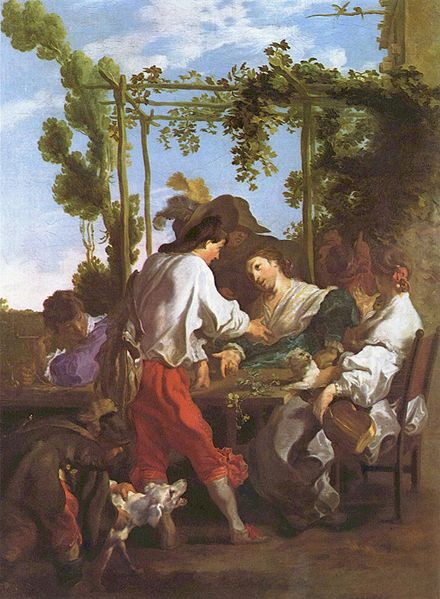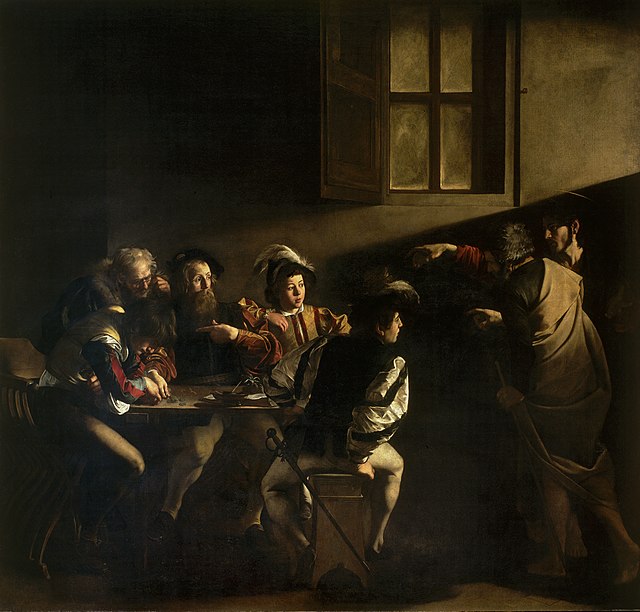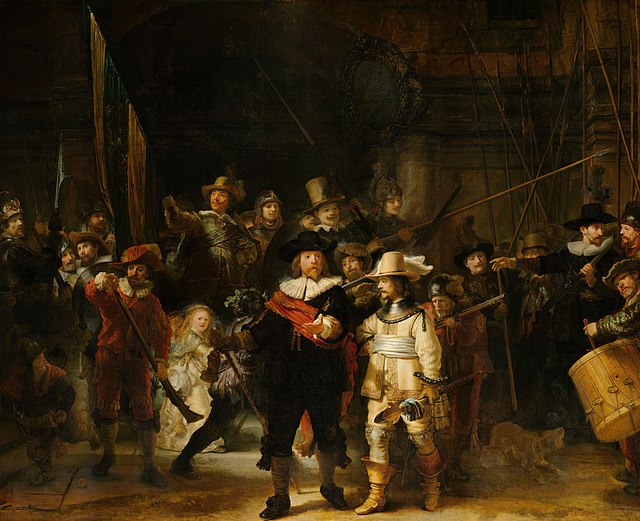Johann Liss or Jan Lys was a leading German Baroque painter of the 17th century, active mainly in Venice.
The Flight into Egypt, Palace of the Kraków Bishops in Kielce
A game of mora, c. 1622
Allegory of Christian Belief
Baroque painting is the painting associated with the Baroque cultural movement. The movement is often identified with Absolutism, the Counter Reformation and Catholic Revival, but the existence of important Baroque art and architecture in non-absolutist and Protestant states throughout Western Europe underscores its widespread popularity.
The Calling of Saint Matthew (1599–1600), by Caravaggio. Contarelli Chapel, San Luigi dei Francesi, Rome. The beam of light, which enters the picture from the direction of a real window, expresses in the blink of an eye the conversion of St Matthew, the hinge on which his destiny will turn, with no flying angels, parting clouds or other artifacts.
Rembrandt van Rijn, The Night Watch or The Militia Company of Captain Frans Banning Cocq, 1642, oil on canvas, 363 cm × 437 cm (143 in × 172 in), Rijksmuseum, Amsterdam. The painting is a classic example of Baroque art.
Orazio Gentileschi, David and Goliath (c. 1605–1607)
Nativity by Josefa de Óbidos, 1669, National Museum of Ancient Art, Lisbon







